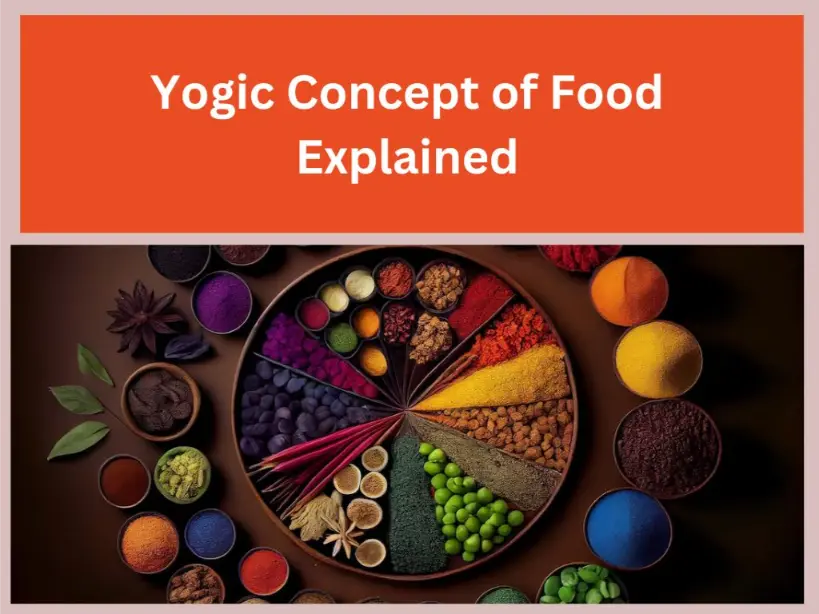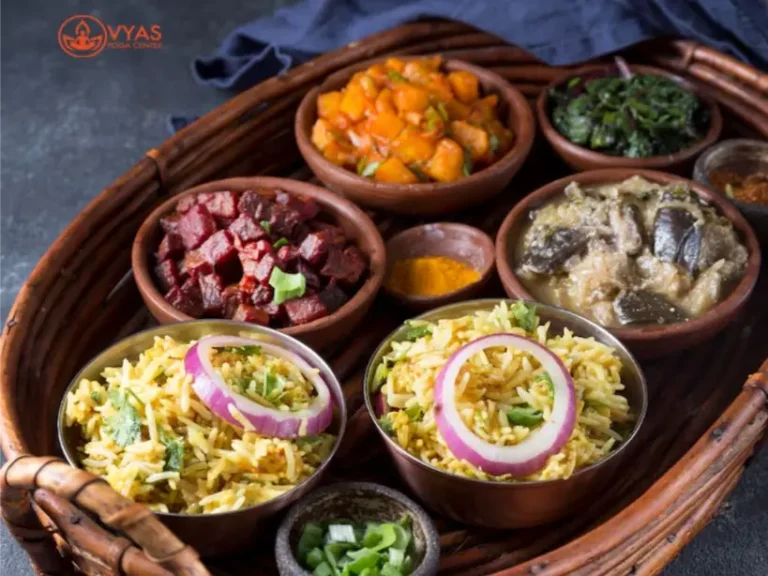
Understanding the Yogic Concept of Food: Sattvic, Rajasic, and Tamasic
Table of Contents
In the practice of yoga, the concept of food extends beyond mere sustenance to encompass its impact on the body, mind, and spirit. As a Yoga Alliance USA approved school, we are committed to this concept.
According to yogic philosophy, different foods possess varying qualities that influence our physical health, mental clarity, and spiritual growth.
In this exploration, we delve into the threefold classification of food in yoga: Satvic, Rajasic, and Tamasic, offering insights into their characteristics, effects, and recommended dietary choices.
1. Satvic Food:

- Satva, meaning purity and harmony, represents the highest state of consciousness in yoga philosophy.
Satvic foods are considered pure, light, and nourishing, promoting clarity, balance, and spiritual growth.
Examples of Satvic foods include fresh fruits, vegetables, whole grains, nuts, seeds, legumes, and dairy products obtained from ethical and sustainable sources.
Satvic diet emphasizes simplicity, moderation, and mindfulness in eating, fostering physical vitality, mental tranquility, and spiritual upliftment.
2. Rajasic Food:

- Rajas, characterized by activity and restlessness, represents the quality of passion, ambition, and stimulation.
Rajasic foods are stimulating, spicy, and heating in nature, often leading to agitation, cravings, and imbalance.
Examples of Rajasic foods include caffeinated beverages, spicy foods, processed snacks, refined sugars, and excessive amounts of salt and spices.
Consumption of Rajasic foods may result in heightened energy levels, but also leads to overstimulation, anxiety, and erratic behavior, disrupting the equilibrium of mind and body.
3. Tamasic Food:

- Tamas, associated with inertia and darkness, represents the quality of inertia, lethargy, and dullness.
- Tamasic foods are heavy, processed, and devoid of vitality, inducing lethargy, dullness, and mental inertia.
- Examples of Tamasic foods include processed meats, fried foods, refined flours, artificial additives, and stale or spoiled foods.
- Excessive consumption of Tamasic foods contributes to physical heaviness, mental dullness, and spiritual stagnation, hindering the body’s natural detoxification and rejuvenation processes.
Cultivating a Yogic Appoach to Food
Emphasize Sattvic foods in your diet, incorporating fresh, organic, and locally sourced fruits, vegetables, whole grains, and plant-based proteins.
Limit intake of Rajasic and Tamasic foods, opting for moderation and mindfulness in consumption to maintain balance and harmony.
Practice mindful eating, savoring each bite with gratitude and awareness of its nourishing qualities.
Listen to your body’s wisdom, honoring its signals of hunger, satiety, and cravings without judgment or attachment.
Yogic Diet at Pro Yoga Program
The yogic concept of food offers a holistic framework for understanding the relationship between diet and well-being, guiding us towards choices that support physical health, mental clarity, and spiritual evolution.
As a Yoga school in Rishikesh, we feel strongly about exploring Ayurveda’s food concepts. At our custom yoga retreats and Yoga Alliance USA approved yoga programs, we cover this topic in detail.
In our 300, 200 and 100 Hour Yoga Teacher Training programs, we explore these concepts in great detail, as Yoga History is a big part of our curriculum.
So if you’re looking to become a yoga pro, come join us for a yoga adventure and learn yoga history with the experts.